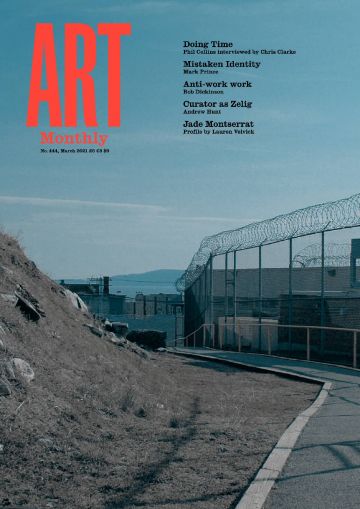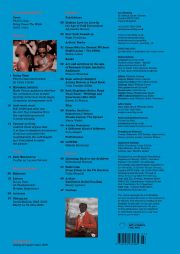Art Monthly 444: March 2021
Phil Collins
Interviewed by Chris Clarke
Mistaken Identity
Mark Prince
Anti-work Work
Bob Dickinson
Curator as Zelig
Andrew Hunt
Buy Now – select:
Want to read this right now?
Get instant access to the entire back catalogue via Exact Editions from only £8.99!
Contents

Phil Collins, Bring Down The Walls, 2020
Feature
Doing Time
Phil Collins interviewed by Chris Clarke
To live with prisons is to live in a prison, so the abolitionist perspective was crucial to the project, especially since reform is but a modality of upholding the system, of reproducing the existing order.
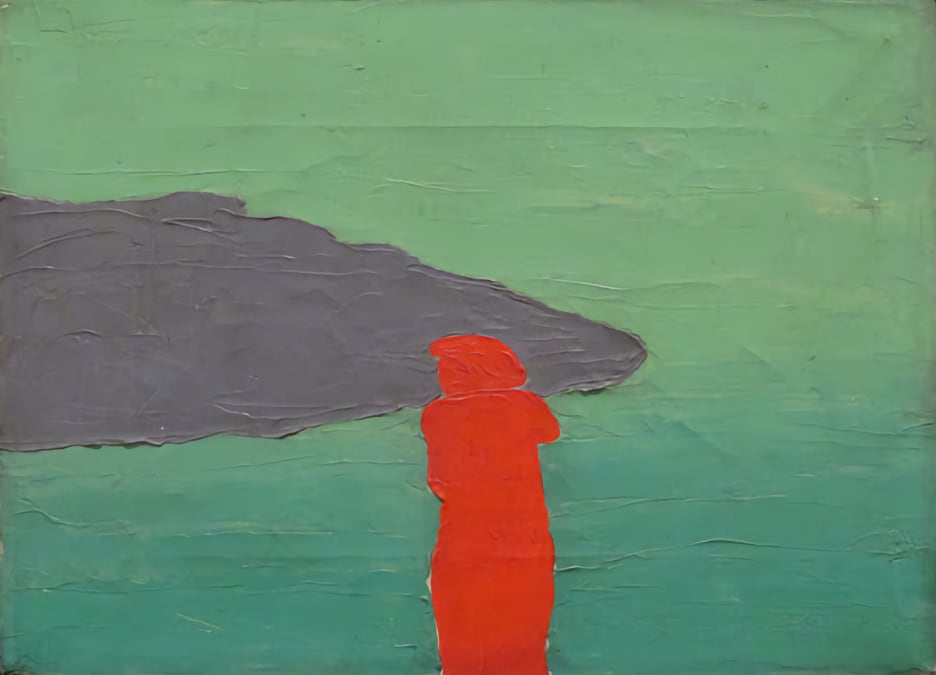
Forrest Bess, Untitled (No 5), 1949
Feature
Mistaken Identity
Mark Prince questions whether the conflation of an artists’ identity with their work might ultimately misrepresent both
As with Jutta Koether’s wonky triangles, or Forrest Bess’s ultimately uncrackable code, it is abstraction which allows David Hammons to absolve himself of the identity in which his art casts him, and have it be conferred on, and limited to, the art itself, in contradistinction to the rules of contemporary identity politics.
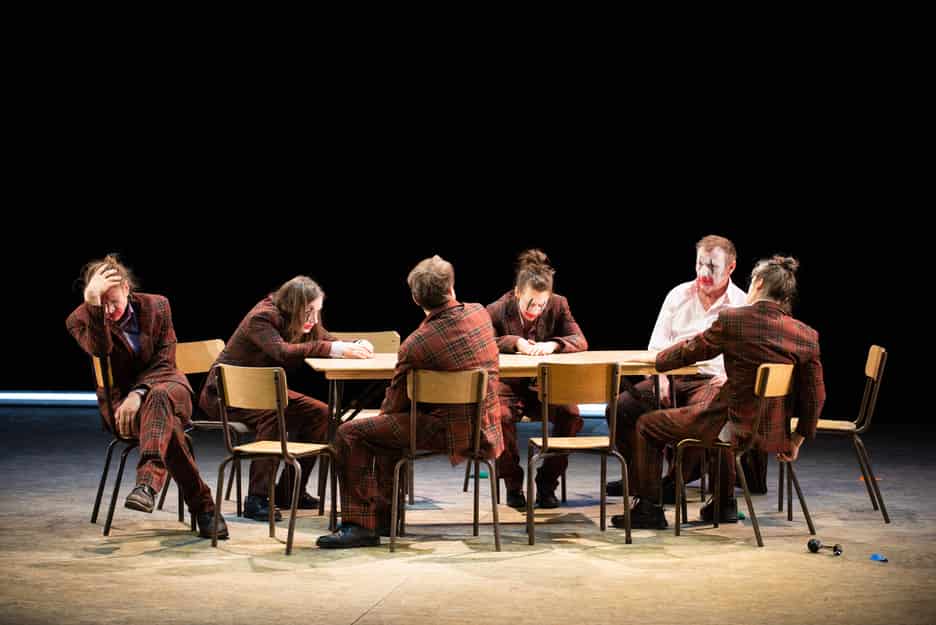
Forced Entertainment, Out of Order, 2018
Feature
Anti-work Work
Bob Dickinson asks can we ever free ourselves from the capitalist pressures to keep working
Deferral, time-wasting, and taking your time are all tried and tested ways of escaping from the temporal clutches of work, but imagination has also been invaded and made to do work. This is what the Italian Autonomist movement calls ‘immaterial’ work, where we create value through our imaginative involvement in cultural production.
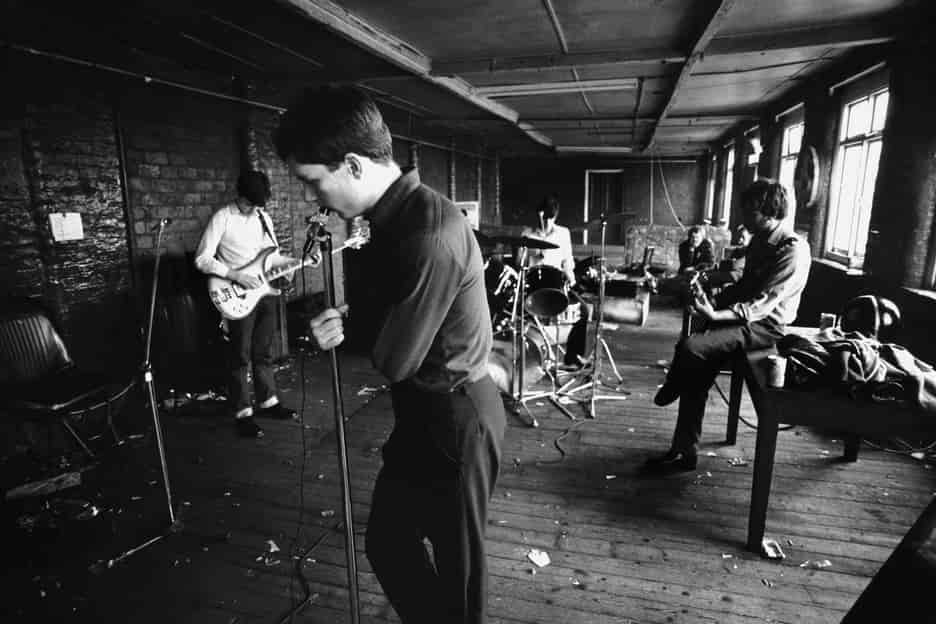
Joy Division, Manchester, 1979, photo by Kevin Cummins
Feature
Curator as Zelig
Andrew Hunt argues that it is time to abandon hierarchies of culture and allow the marginalised, the self-taught and overlooked to enter the picture
It is important to consider the background to recent curatorial tropes in which the prevalent narrative is not to do with the ‘selfie’ but with a trend towards identifying with pivotal moments, as if to say: ‘that’s me in the picture’.
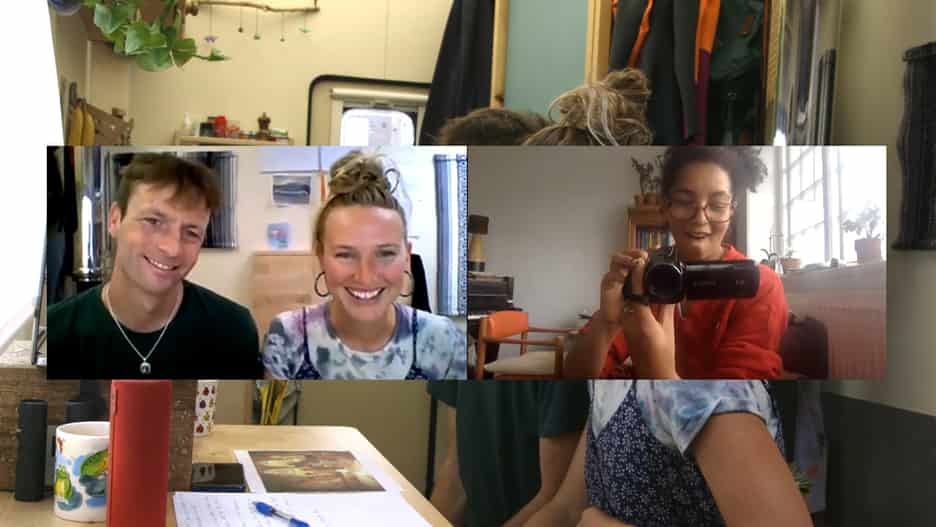
Jade Montserrat and Webb-Ellis, Chronicle ai, 2020
Profile
Jade Montserrat
Lauren Velvick on the notion of care in the artist’s quest for an ethical art practice
Jade Montserrat’s generative and non-extractive modes of operation are deeply informed by her dedication to anti-racism, often at great personal cost, which has involved confronting the explicit and implicit ways that racism, imperialist attitudes and specifically anti-blackness are enacted and encountered in cultural spaces.
Editorial
Dante’s Peak
The 700th anniversary of the death of Dante has given many commentators the chance to repurpose his Inferno for their own visions of Hell, but the real-life tale of the nationalistic squabbling over his bones for co-option and commemoration is the more relevant tale for our times.
One of the reasons Dante’s Divine Comedy has continued to inspire generations is the portrait, often satirical, that Dante draws of society, which has resonated down the centuries. For one thing, he placed bankers, many of whose names would have been recognisable to his readers, in a lower circle of Hell than murderers.
Letters
Boxed In
Sonya Dyer takes issue with last month’s feature by Morgan Quaintance
My impetus in writing the report was to give voice to the concerns of many of my Black peers about the types of diversity initiatives being undertaken at the time, not the concept of ‘diversity’ (a term rightfully contested now) itself.
Looking Back in Anger
JJ Charlesworth also takes issue with last month’s feature by Morgan Quaintance
If it’s so easy for progressive politics to be recuperated, it might be worth asking whether those politics were ever so radical in the first place.
Reply
Morgan Quaintance responds to Sonya Dyer and JJ Charlesworth
There is a small problem with this unwitting participant narrative, however, and that is the right-positive libertarianism of ‘Boxed In’ and its overall emphasis on individual responsibility as the solution to structural inequality.
Artnotes
MoMA on Board
The issue of toxic philanthropy is raised by artists over MoMA’s support for board member Leon Black; the Guerrilla Girls reveal that they cancelled their publishing contract with Phaidon when they discovered it was owned by Black; Cuban artists begin legal action to remove the country’s controversial culture minister; a new safety guide is published for artists under threat; hundreds of artists in Moscow face eviction; Goldsmiths staff carry out industrial action; the Netherlands government adopts the most progressive restitution laws in Europe; Coventry plans a central art storage hub for the ACE Collection; plus the latest on galleries, people, prizes and more.
Obituaries
David Medalla 1942–2020
Peter Fillingham
Barry Le Va 1941–2021
Alexis Lowry

Laura Cemin, 4 minute warm up, 2020
‘Modern Love (or Love in the Age of Cold Intimacies)’
Exhibitions
Modern Love (or Love in the Age of Cold Intimacies)
Museum für Neue Kunst, Freiburg
Agnieszka Gratza
At the heart of an exhibition that explores how the internet and social media have altered and, in some ways, trivialised our experience of love and intimacy is a nostalgic longing for closeness, physical presence and romance which harks back to a more analogue era.

Tom Bronk, 20 (A) 2, 2020
Exhibitions
New York Round-up
Andrew Edlin Gallery • Salon 94 • SHIN Gallery • Martos Gallery
Saim Demircan
Five loosely themed exhibitions reshuffled several artists between them, designed, I suspect, to showcase artworks as one would see them at a booth rather than in a museum or gallery context.
Artists’ Books
Grace Ndiritu: Dissent Without Modification – The 1990s
Hettie Judah
Dissent Without Modification is a self-portrait through interlocution. No single interview could achieve as rich a profile of Grace Ndiritu as that generated by these seven conversations. In that, it is an exceptional document, one of which many artists might rightly feel jealous.

Dream Away film still from the cover of Art and Activism
Books
Art and Activism in the Age of Systemic Crisis: Aesthetic Resilience
Francis Frascina
The essays include useful case studies of ‘aesthetic resilience’ as ways to nurture the survival of endangered radicalism – alternative and oppositional practices – in a rapacious corporate world that co-opts and markets critique and innovation even when under systemic crisis.
Sean Ashton: Sampler
Ariana Reines: A Sand Book
John Douglas Millar
Sean Ashton’s lyric voice comes through loud and clear, and so what the book presents us with is a question about where subjectivity resides in the poetic act, whether it can be renounced or fully abjured. Like all the most interesting conceptual practices, this is a book that nuances poetic subjectivity rather than negating it.
Seth Siegelaub: Better Read Than Dead – Writings and Interviews 1964–2013
Karen Di Franco
The book acknowledges not only the importance of the informational network Siegelaub constructed to locate his projects and the influence of these methodologies on contemporary curating, but also how his work emerged from discussion, collaboration and investigation, a messier and more contingent kind of experimentation that has often been streamlined to fit specific types of historicisation, the results of which were often contested by Siegelaub himself.
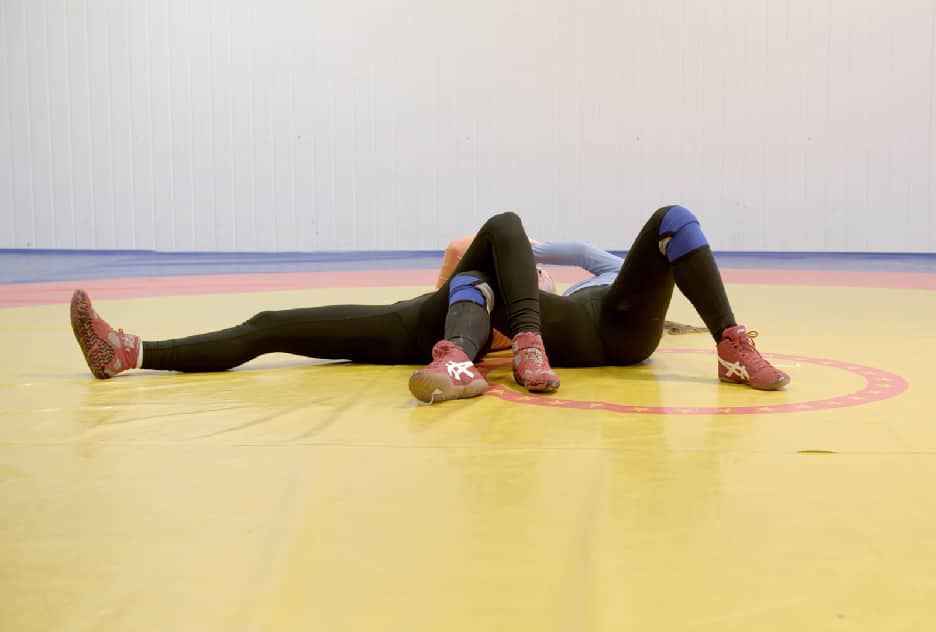
Phoebe Davies, The Sprawl, 2020
Film
Monika Oechsler: Sometimes I Dream
Phoebe Davies: The Sprawl
Maria Walsh
Paradoxically, the drive towards bodily resilience exposes the body’s vulnerability, the building of muscle strength favouring some body parts and not others in the girls’ drive to win.
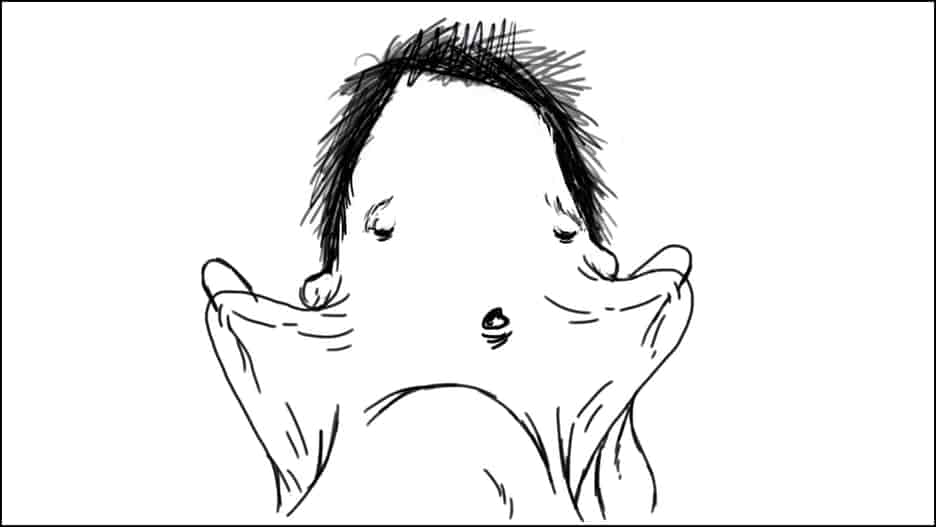
Jordan Baseman, A Different Kind of Different, 2020
Film
Jordan Baseman: A Different Kind of Different
Sara Jaspan
Baseman’s work frequently addresses subjects outside his lived experience. He is acutely aware of the potentially problematic nature of this, but at no point does A Different Kind of Different feel exploitative. His interview-based practice and method of creative non-fiction are founded on consent and a deep respect for his participants/collaborators.
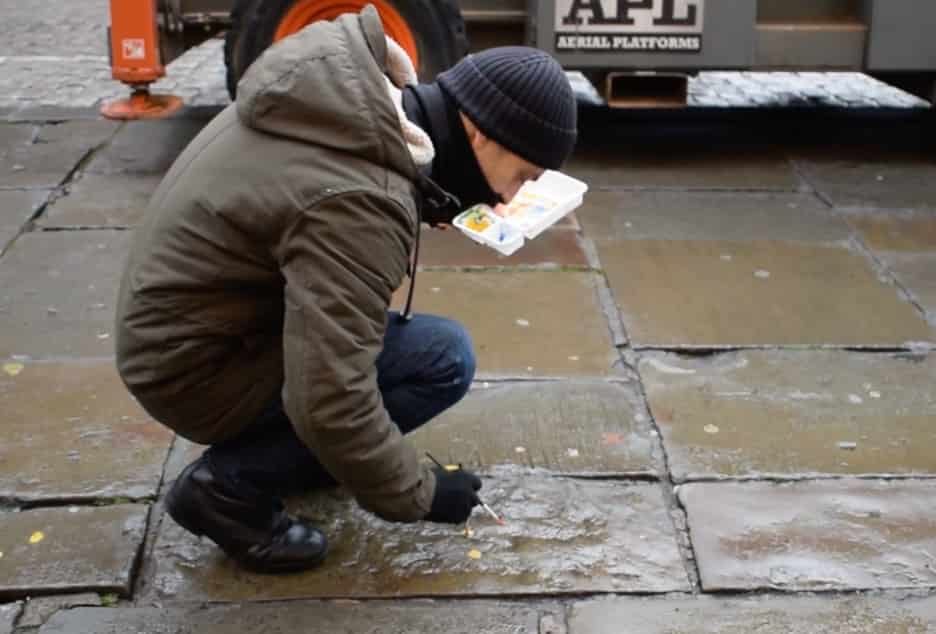
Omid Asadi, Hansel and Gretel, 2021
Performance
LOITER
Natalie Bradbury
Covering a distance of just over a mile and a half – a walk that would usually take around half an hour – ‘LOITER’ elongated this journey to a period of two hours, slowing down the pace and turning a familiar and well-trodden route into an experience that felt disembodied and sometimes dreamlike.

Mitra Tabrizian, Road to Nowhere, 2005
from the series ‘Borders’
Reports
Listening Back to the Archives
Mohammad Namazi considers the work of Mitra Tabrizian, John Akomfrah and Gurinder Chadha, amongst others, to question the ‘cultural memory’ of the archive and its colonial legacies
Although the recent drives for decolonisation in many UK institutions has seen an engagement with so-called minority groups, there is the possibility that problems can be disguised under new languages of coloniality.
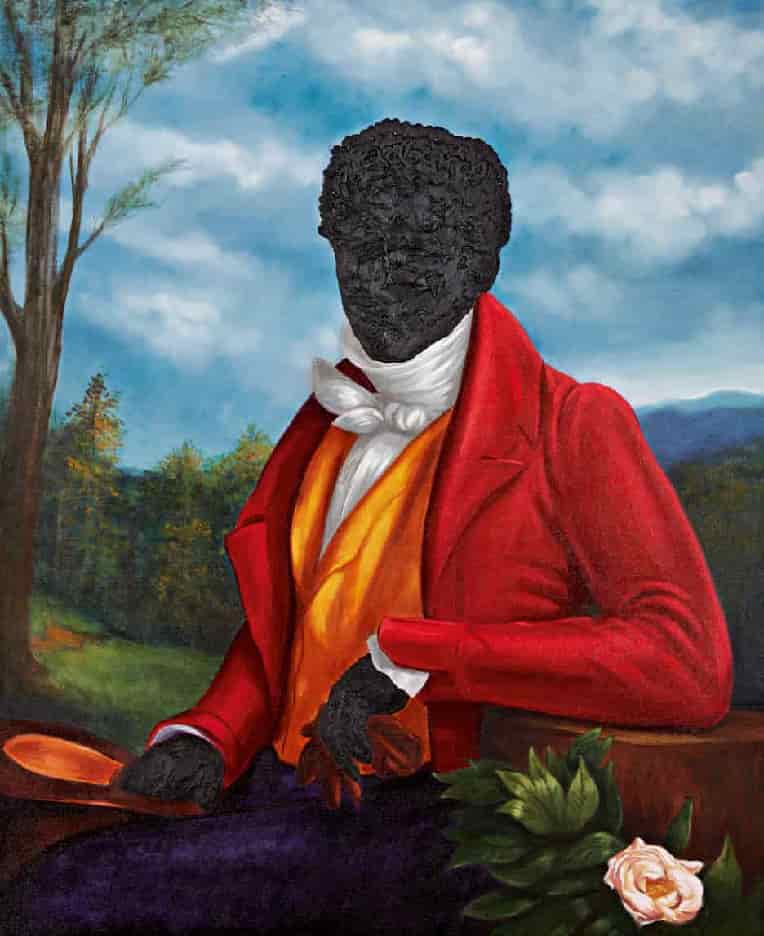
Titus Kaphar, Page 4 of Jefferson’s “Farm Book”, 2018
estimated at $250,000, sold for $854,900
Salerooms
A Pandemic Chronology
Part Two: From Frieze to the US election
Colin Gleadell
Hales Gallery had raised Frank Bowling’s price levels for the first time in his long career to such a point that sharks were bound to be circling. Next month Hauser & Wirth celebrates its catch, staging its first show for Bowling. At one level, this is great for black art generally, but it does have an uneasy echo of colonial land grabs – white businessmen looking to profit from black labour. But the revaluation is, of course, taking place within a much broader context.
Artlaw
Exhibition Relief Funding
Henry Lydiate
A key reform is to allow ‘live art’ events to qualify as exhibition content (performance art and other live components of museum and gallery exhibition and display are currently excluded from the scheme).

